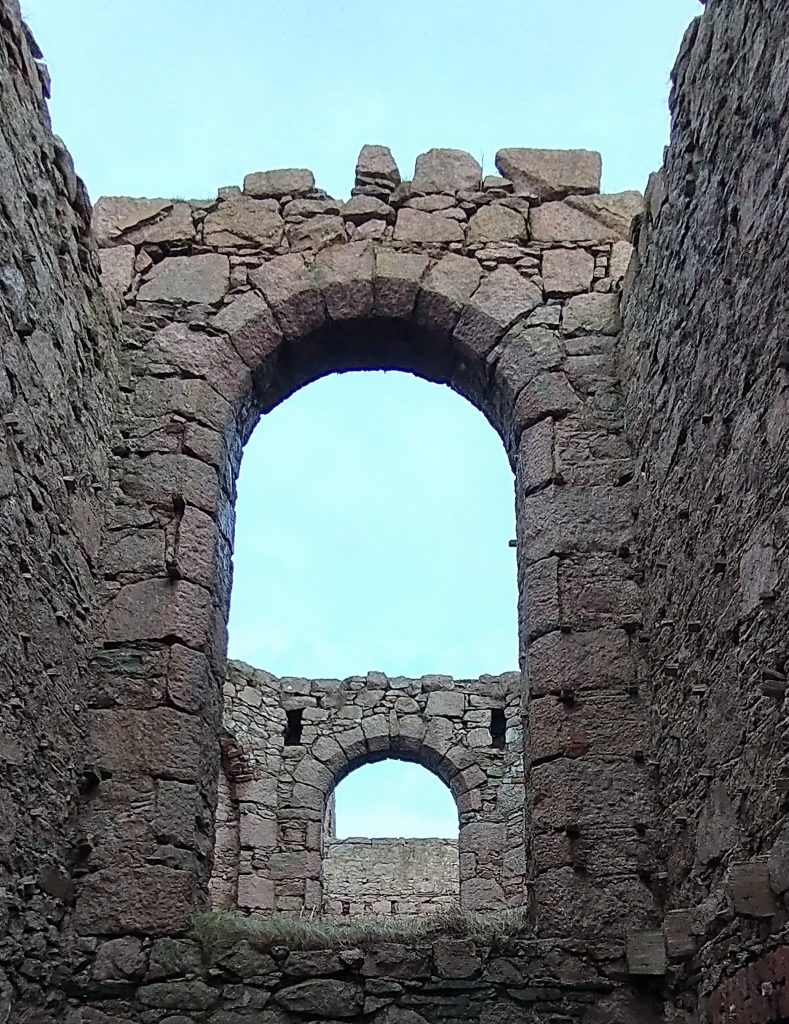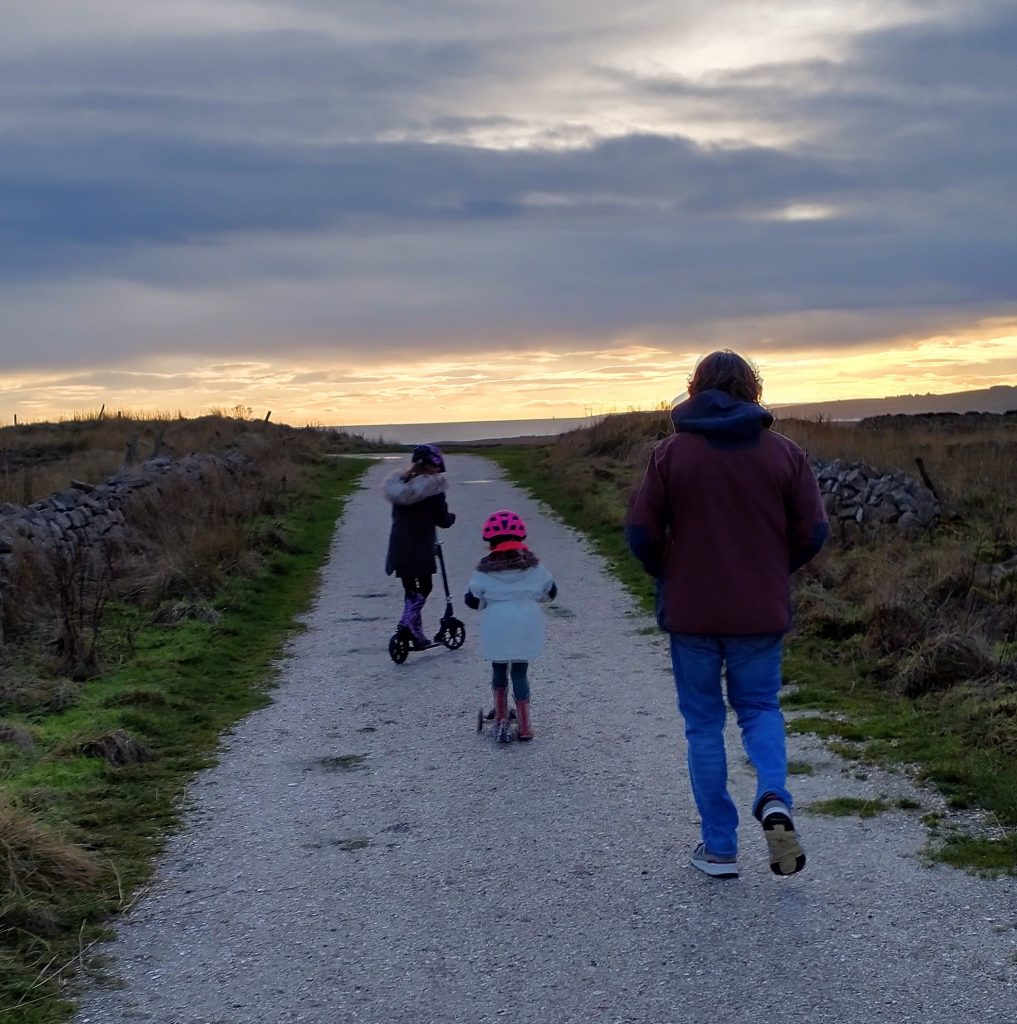In my never-ending quest to feed my castle-visiting addiction I stumbled across Slains Castle in Aberdeenshire a few weeks ago and discovered Bram Stoker was said to have drawn inspiration from it for Dracula’s castle.

Dracula, of course, was loosely based on a real prince connected with the Ottoman Empire, one period in whose history I’m currently researching for my next book. It’s always amazing how things tie up!
Inevitably Slains Castle had a long and chequered history prior to one Abraham (Bram) Stoker’s visits. The castle was owned by the Earl of Errol who reverted to Catholicism in 1587, as part of a plot supported by Spain. Not an especially wise decision since Scotland had been Protestant for nearly thirty years by then. Errol fled the country and James VI had Slains Castle destroyed. Yet when Errol returned to Protestantism in 1597, he found favour with the king and came home to rebuild his castle (although the family again shifted allegiance much later to support Bonnie Prince Charlie).

Perched on a cliff top, with some deep gullies and long drops the remaining ruin is an atmospheric hotchpotch of towers and courtyards added at various times by various Errols over the centuries since.
Samuel Johnson and his companion James Boswell spent a night at the castle during their tour of Scotland in 1773, although Boswell had some complaints to make about his night’s sleep…
I had a most elegant room. But there was a fire in it which blazed, and the sea, to which my windows looked, roared, and the pillows were made of some sea-fowl’s feathers which had to me a disagreeable smell. So that by all these causes, I was kept awake a good time.

The house was let as a summer home in early 1900s and both Lord Asquith, and Winston Churchill visited. Bram Stoker never did stay in the castle but locally at the Kilmarnock Arms Hotel in nearby Cruden Bay. He came each summer for his annual month long holiday and this was where he started writing Dracula.

On my return home, coincidentally, the story of Vlad Dracula pops up on my video feed. It’s part of a Netflix drama documentary series called The Rise of Empires, and this season is focused on the war between the Ottoman Emperor Mehmed II and Vlad Dracula of Wallachia. My own next in series is partly set in Constantinople so I’m enjoying learning as much as I can about it, although 1462 is slightly earlier than my period. I settle down to find out more about the real Dracula.

The first thing is the name is not pronounced Dracula with the emphasis on the first syllable but Dracula, emphasis on the second syllable. Wallachia, a Christian country, was part of present day Romania, which was then expected to pay a tribute to the Ottoman Empire, who controlled it as a buffer zone between them and Hungary.

As a boy Vlad Dracula and his brother Radu were held as hostages and surety of their father’s loyalty at the Ottoman court. They were educated alongside the future Mehmed II which meant Mehmed and Vlad knew one another’s strengths and weaknesses very well. Vlad and Radu would also have studied the Koran as part of their education, but only Radu converted to Islam.
In 1453 Mehmed took Constantinople bringing an end to the Byzantine Empire. His intention was to advance as far west as Alexander went east, and he adopted the title of Caesar of the Roman Empire. A remarkable tactician and a gifted engineer, Mehmed was a cunning man with a web of spies throughout Europe.

When Prince Vlad reclaimed the throne of Wallachia he resented paying the tithe Mehmed demanded and nailed Mehmed’s ambassadors’ turbans to their heads leaving Mehmed in no doubt of his intentions. Vlad tried to negotiate the support of his Hungarian neighbour to free him of the Ottoman yoke but Sultana Marija, Mehmed’s wily stepmother who was a former princess of Hungary and an Orthodox Christian, visited the Hungarian Court and used her influence to persuade the Hungarian king to prevaricate.

Mehmed was not a man to show weakness, and he crossed the Danube with a vast force determined to subdue Vlad. Outnumbered, yet very cunning, Vlad ran a campaign of guerrilla warfare and night attacks leaving a trail of death, destruction and scorched earth behind him. He even infiltrated lepers and sufferers of tuberculosis and the plague into Mehmed’s camp – a kind of germ warfare.
He was trying to free his country from the tyranny of the Turks however, even by medieval standards, Vlad Dracula was exceptionally cruel. The moniker impaler was ascribed for his particular skill, and fondness, for shoving a stake into his enemy and hammering it with a mallet until the point came out the other end. He was especially adept at avoiding the vital organs which meant death was prolonged – and he had both women and men impaled.

The terror culminated in The Forest of Death where 24,000 Moslems and Turkish soldiers were impaled and arrayed like a forest: a most gruesome art form.
Vlad came close to murdering Mehmed but in the end Mehmed’s superior numbers prevailed. Vlad escaped and spent the rest of his life on the run.
Vlad’s younger brother Radu, known variously as Radu the Beautiful and Radu the Coward, remained loyal to Mehmed. There is some evidence he was sexually abused by Mehmed as a boy and ended up as Mehmed’s male concubine, although this isn’t directly referred to in the Netflix series.
Mehmed replaced Vlad with Radu. Those loyal to Vlad soon came over to Radu who was considerably less bloodthirsty and known for his quiet intelligence.
The series is beautifully shot. Although primarily a drama, the action is paused every so often while historians give us detail of the background story, the key players, the clever tactics and an insight into motivation. Well worth the watching.

And as for Slains Castle, it’s a most stunning walk along the old carriageway and then down to gorgeous Cruden Bay. Well worth the visit.

References: The Historical Dracula: Monster or Machiavellian Prince? by John Akeroyd
Netflix Series: Rise of Empires Season 2
and lots of Wikipedia entries


